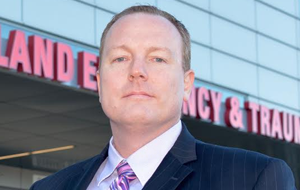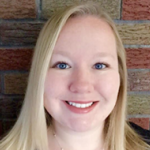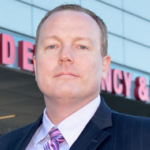When citizens of Dallas County voted to fund a $1.3 billion project to replace the old Parkland Health and Hospital System, CIO Matthew Kull sought to make it one of the most technologically advanced hospitals in the nation. With a significant portion of the construction budget dedicated to technology that focused on streamlining record keeping, enhancing security, and improving customer care, Kull and his team made that goal a reality.
 Kull recently won the Nonprofit CIO of the Year award from the Dallas CIO Leadership Association. We asked him about the technologies in use at the hospital today and how he encourages his team to experiment, take risks, and push toward great outcomes.
Kull recently won the Nonprofit CIO of the Year award from the Dallas CIO Leadership Association. We asked him about the technologies in use at the hospital today and how he encourages his team to experiment, take risks, and push toward great outcomes.

The Enterprisers Project (TEP): Parkland is known as one of the first digital hospitals in the United States, and you’ve described it as the hospital equivalent of a smart home. Can you describe some of the technological advances in use at the hospital today?
 Kull: We wanted to “future-proof” the hospital to ensure that our new campus would last well into the future. In our planning phase of designing new Parkland, we wanted to make a patient’s visit as seamless as possible. Patients are now able to sign in via touchscreen kiosks, which can guide them to their destination within the hospital’s public areas. These kiosks are icon-driven, interactive, can give patients and visitors instructions in both English and Spanish, and allow them to text, email, or take a photo of the screen for directions.
Kull: We wanted to “future-proof” the hospital to ensure that our new campus would last well into the future. In our planning phase of designing new Parkland, we wanted to make a patient’s visit as seamless as possible. Patients are now able to sign in via touchscreen kiosks, which can guide them to their destination within the hospital’s public areas. These kiosks are icon-driven, interactive, can give patients and visitors instructions in both English and Spanish, and allow them to text, email, or take a photo of the screen for directions.
Every patient room features a digital sign that alerts nurses to a patient’s conditions. The sign also identifies specific patient information, their doctor and nurse, and other care guidelines such as patient restrictions. Additionally, patients no longer need to summon a nurse for run-of-the-mill tasks, such as replacing an IV bag. Nurses are automatically alerted by monitoring equipment within the room.
Simple reporting, such as hourly blood pressure readings, are automatically entered into a patient’s electronic health record. Every bed in the hospital is on a digital network with its electronic information. Beds can shift patients without a nurse’s assistance to prevent bed sores and can create alerts to the nurse call system, one of our clinical communication platforms.
Many of the technologies incorporated in new Parkland were uncommon to the healthcare field at the time of their inception. The media wall, more commonly known as the patient foot wall, was one of these new technologies, bringing an online interactive patient experience system to our patients. The footwall supports a digital TV, a camera, and allows a patient to be involved in their own care.
TEP: Parkland’s primary mission is to provide the highest quality of care to patients, and technology is clearly playing a role in doing so. Do you find that this alignment of IT roles with the company mission helps with your talent retention efforts?
Kull: Definitely. Having motivated, talented, and committed employees who understand our own divisional goals along with the organization’s mission is a huge step forward in talent retention. Last year, our division had one of the lowest levels of turnover throughout the organization. During my three-year tenure at Parkland, we have reduced unfavorable turnover from 18.5 percent in 2014 to 4.5 percent in 2016. We are committed to improving our talent position, making Parkland one of the best places to work in IT through mentorship and career progression.
TEP: With technology innovation so core to the hospital’s mission, how do you motivate those in IT to experiment, take risks, and push toward great outcomes?
Kull: At my core, I believe that everyone strives to make their mark on an organization through their excellent work. My goal and leadership philosophy revolve around encouraging people to see their own value and allowing them to work outside of their comfort zone to find their greatness. This greatness is an innate ability that I believe all professionals have within.
I’m a steadfast believer of the Aubrey Daniel ideals, which are centered on positive reinforcement. To summarize his beliefs: “It always works; everyone needs something a little different; and you will always get more of a behavior you reinforce.” It’s been my experience that tapping one’s greatness or, more scientifically, their “discretionary effort” – the effort above and beyond what’s required – can be brought out through positive immediate consequence or consistent immediate positive reinforcement and praise in the case of leadership in action for a job well done.
By building a foundation of confidence and safety for staff, it’s easy to empower and enable my team members to drive positive value in their work and allow them to take controlled, moderate risks to achieve great outcomes where I can be a source of guidance and coaching, rather than a limiting control factor. With clear expectations and reinforcement, the requisite accountability takes care of itself.
TEP: What is your approach to keeping pace with technology change? What’s your strategy for evaluating new technologies that you may want to bring into the hospital?
Kull: To stay abreast of the latest developments in the healthcare IT field, I’ve always made it a point to attend industry conventions and learn new standards via certification. I’m a member of the Healthcare Information and Management Systems Society, a global, cause-based, not-for-profit organization focused on better health through information technology. HIMSS leads efforts to optimize health engagements and care outcomes using information technology.
I’m also a partner of CHIME, the College of Healthcare Information Management Executives. CHIME is the professional organization for CIOs and other senior healthcare IT leaders. CHIME enables its members and business partners to collaborate, exchange ideas, develop professionally, and advocate the effective use of information management to improve healthcare in the communities they serve. I also joined CHIME to stay in touch with where the IT healthcare industry is headed.
At Parkland, when it comes to evaluating new technologies, we look at three criteria. These technologies need to improve our level of patient care, bring new forms of efficiencies to IT, and reduce costs to our organization. As a public entity, we evaluate any new technologies very closely to ensure that we remain good financial stewards of the funds provided to us.
TEP: What is an important leadership lesson you’ve learned over your career?
Kull: Developing and nurturing talent within one’s area is one of the cornerstones of forming a successful team. I’ve actively focused on hiring and promoting internally, encouraging leadership development through classes and coaching, and encouraging employees to take the time to learn new skills and expand their boundaries. Last year we offered a set of division-wide process improvement classes to our employees.
I believe in a mix of training and mentorship when developing talent. My team developed a mentorship program where staff is paired with leaders outside of their direct management line. The program is committed to confidentiality within the mentor/mentee relationship and provides a valuable role-playing environment where situational issues can be explored and guided in a safe forum.
I also advocate career-pathing for our internal employees. For example, we found a team member in our help desk that had a keen eye for trends and patterns who was recruited for a role in the analytics group, where he flourished.





